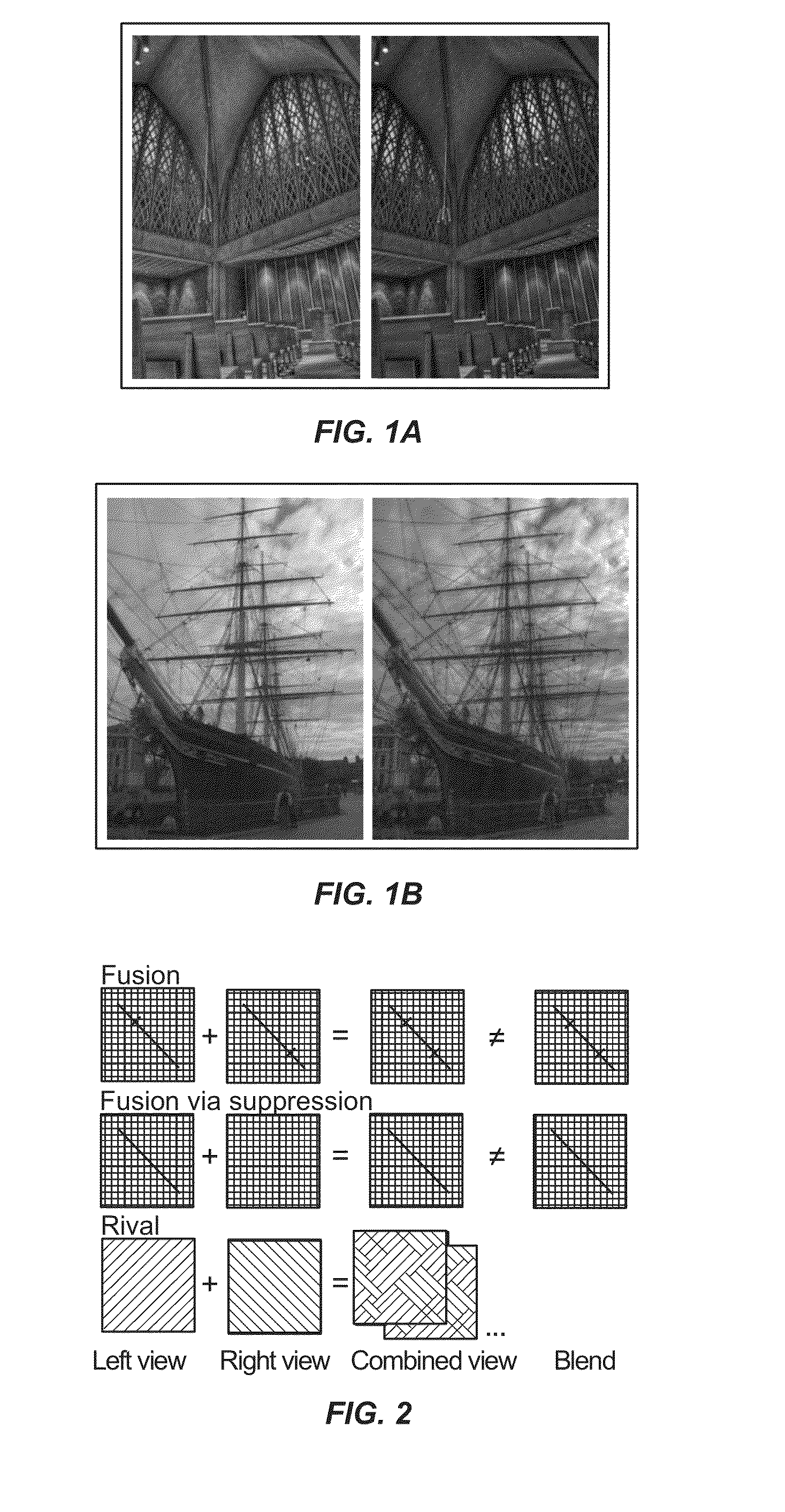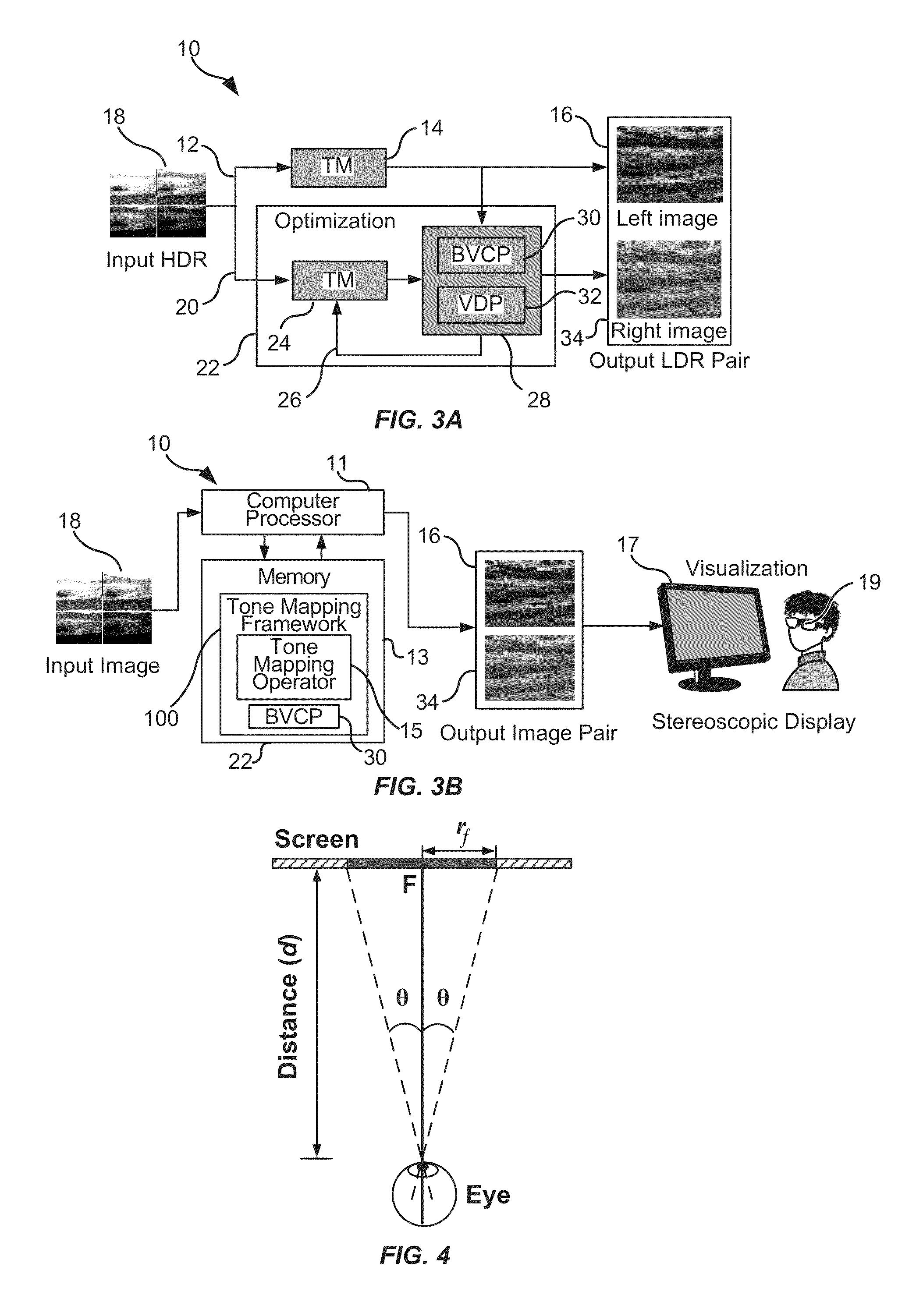Binocular visual experience enrichment system
a visual experience and binocular technology, applied in image enhancement, instruments, computing, etc., can solve the problems of avoiding viewing discomfort, unable to achieve good balance, so as to enhance the image content, avoid viewing discomfort, and improve the visual content. human perception
- Summary
- Abstract
- Description
- Claims
- Application Information
AI Technical Summary
Benefits of technology
Problems solved by technology
Method used
Image
Examples
Embodiment Construction
[0076]According to an embodiment of the invention, a novel technique in computer graphics utilizes a human vision phenomenon and proposes a binocular tone mapping framework. The proposed framework generates a binocular low-dynamic range (LDR) image pair that preserves more human-perceivable visual content than a single LDR image using the additional image domain. Given a tone-mapped LDR image (left, without loss of generality), the inventive framework optimally synthesizes its counterpart (right) in the image pair from the same source HDR image. The two LDR images are different, so that they can aggregate to present more human-perceivable visual richness than a single arbitrary LDR image without triggering visual discomfort. For example, in FIGS. 1A and 1B, one image within each pair presents more global contrast (the left image of each pair) while the other presents more local details (the right image of each pair). To achieve this, a novel binocular viewing comfort predictor (BVCP...
PUM
 Login to View More
Login to View More Abstract
Description
Claims
Application Information
 Login to View More
Login to View More - R&D
- Intellectual Property
- Life Sciences
- Materials
- Tech Scout
- Unparalleled Data Quality
- Higher Quality Content
- 60% Fewer Hallucinations
Browse by: Latest US Patents, China's latest patents, Technical Efficacy Thesaurus, Application Domain, Technology Topic, Popular Technical Reports.
© 2025 PatSnap. All rights reserved.Legal|Privacy policy|Modern Slavery Act Transparency Statement|Sitemap|About US| Contact US: help@patsnap.com



